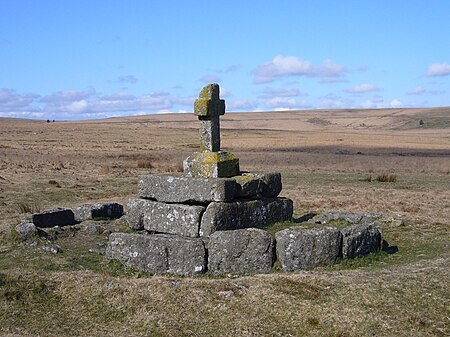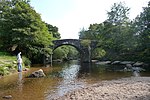Childe's Tomb

Childe's Tomb is a granite cross on Dartmoor, Devon, England. Although not in its original form, it is more elaborate than most of the crosses on Dartmoor, being raised upon a constructed base, and it is known that a kistvaen is underneath. A well-known legend attached to the site, first recorded in 1630 by Tristram Risdon, concerns a wealthy hunter, Childe, who became lost in a snow storm and supposedly died there despite disembowelling his horse and climbing into its body for protection. The legend relates that Childe left a note of some sort saying that whoever found and buried his body would inherit his lands at Plymstock. After a race between the monks of Tavistock Abbey and the men of Plymstock, the Abbey won. The tomb was virtually destroyed in 1812 by a man who stole most of the stones to build a house nearby, but it was partly reconstructed in 1890.
Excerpt from the Wikipedia article Childe's Tomb (License: CC BY-SA 3.0, Authors, Images).Childe's Tomb
Foxtor Mire Crossing (Caution), West Devon Dartmoor Forest
Geographical coordinates (GPS) Address External links Nearby Places Show on map
Geographical coordinates (GPS)
| Latitude | Longitude |
|---|---|
| N 50.51719 ° | E -3.94085 ° |
Address
Childe's Tomb
Foxtor Mire Crossing (Caution)
PL20 6SL West Devon, Dartmoor Forest
England, United Kingdom
Open on Google Maps











